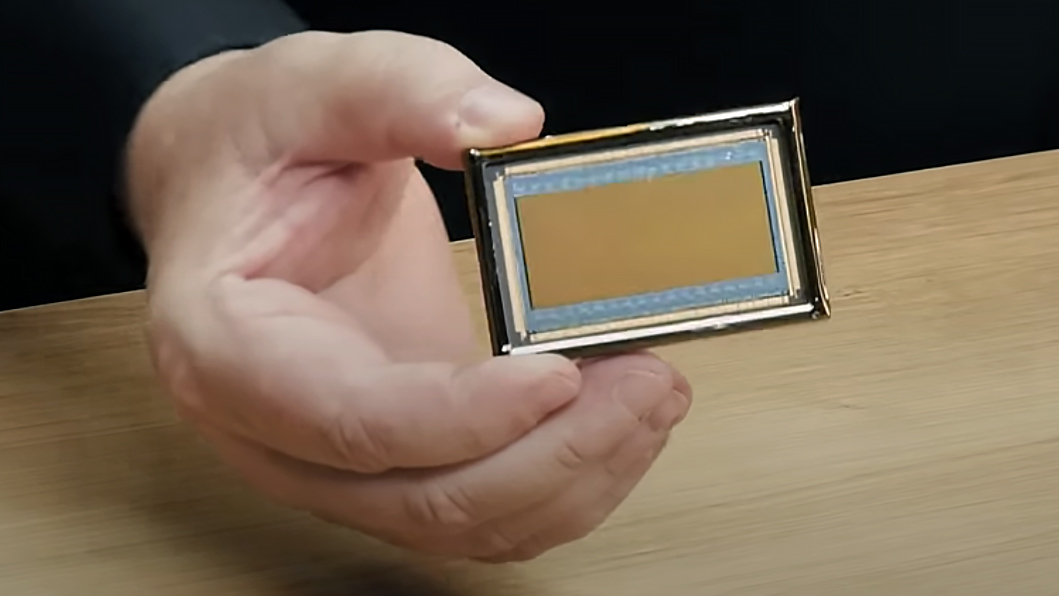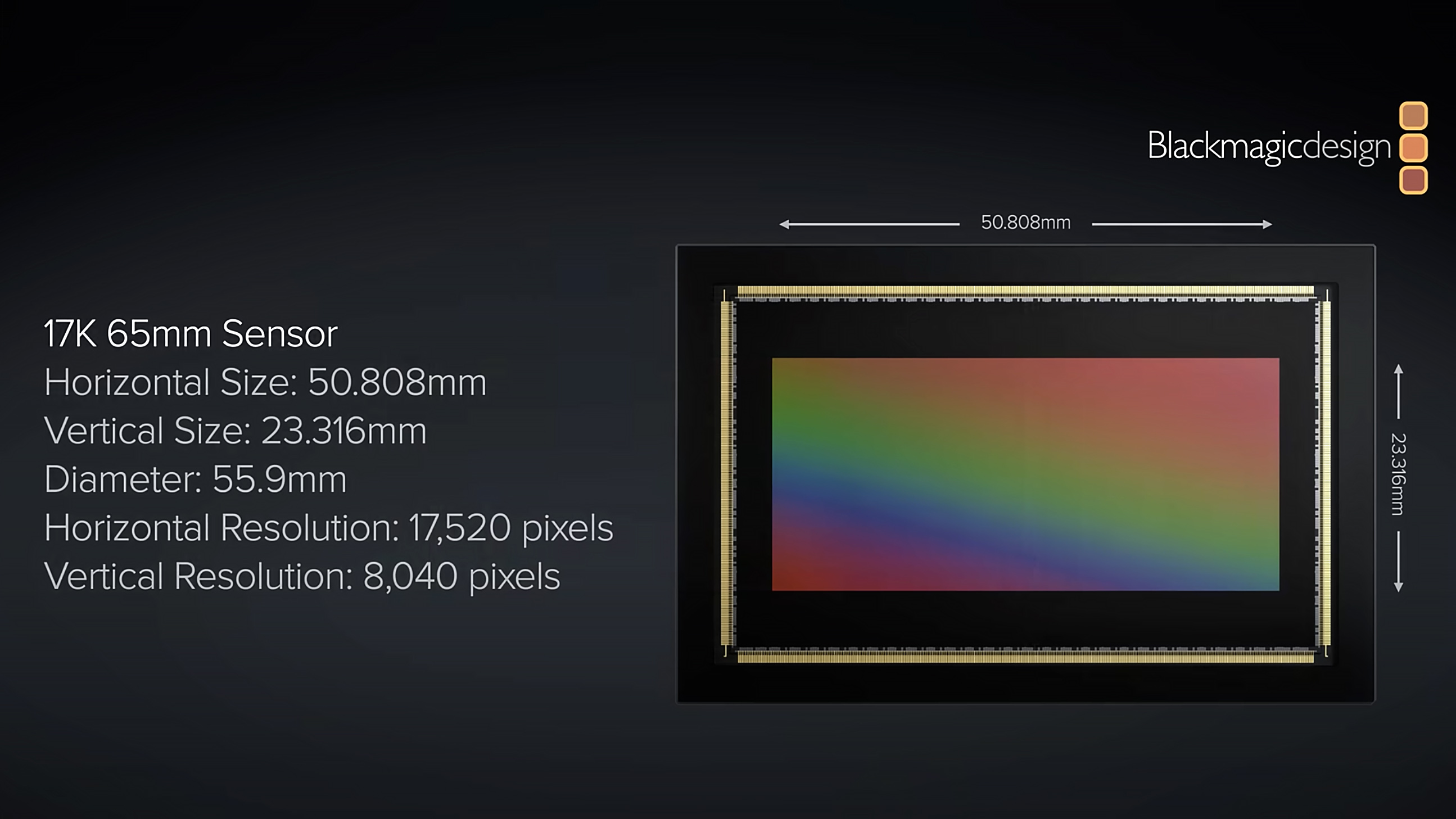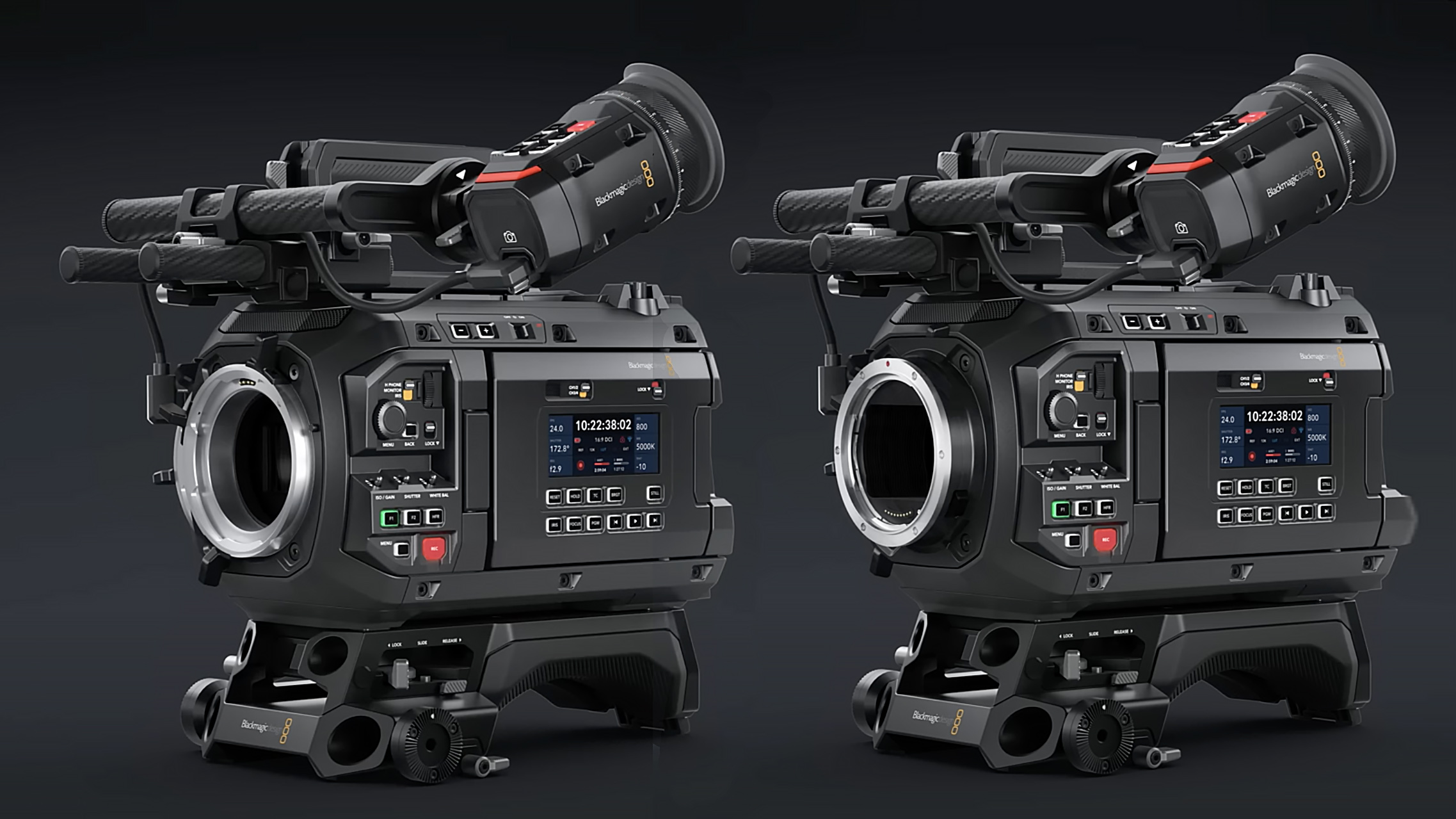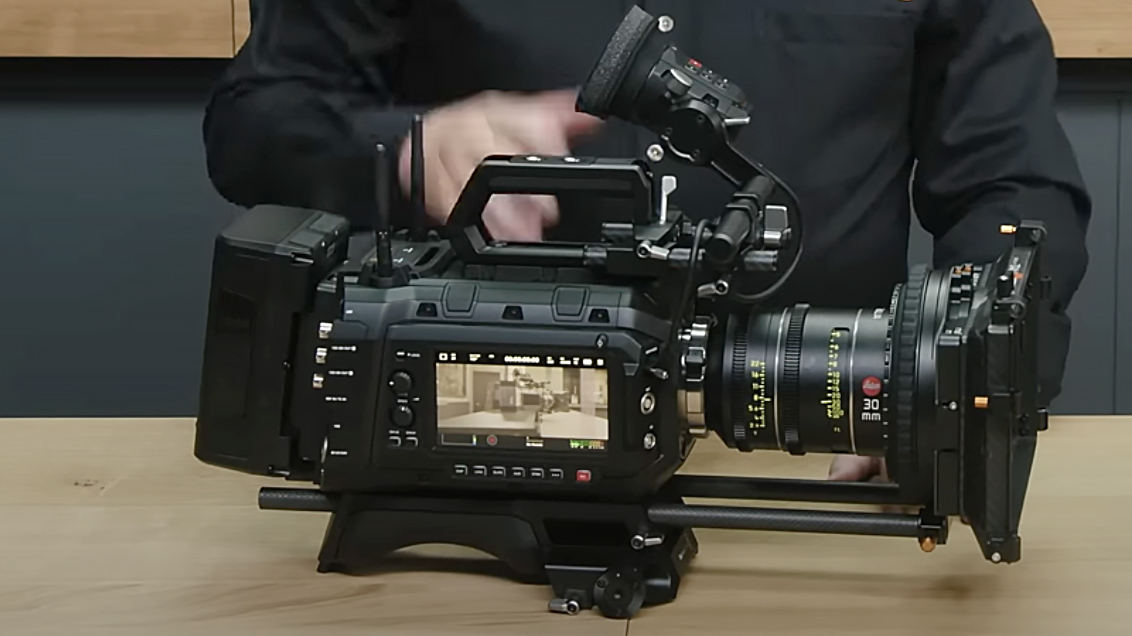
Blackmagic Design's new 17K cine camera sensor is extraordinary. Unveiled as just one of over 20 new products at NAB 2024 – including two other new cine cameras – its 17K sensor and the cameras it will be used in are groundbreaking for many reasons.
Forget, 4K and 8K - this sensor allows you to record in 17K. But what does that actually mean?
Essentially, 17K means that the sensor has a width of over 17,000 pixels - making it a monster, offering higher resolution than we have ever seen before from a cine camera, and four times more resolution than 8K cameras.
In fact, the pixel dimensions of the new sensor measure 17,520 pixels by 8,040 pixels - offering a phenomenal 140 megapixel resolution for every frame that this movie camera shoots.
The sensor itself is huge - measuring 50.8 x 23.3mm - so it is around 35% wider than the full frame. These dimensions have been chosen to be similar to those of the 70mm 5-perf film used to shoot high-budget Hollywood movies.

Similar digital cameras are already available in Hollywood - the most obvious being the Arri Alexa 65 - which has a slight larger 54.12 × 25.59mm size, but a lower, 6K (6560×3102-pixel) resolution.
The Arri Alexa 65 is a camera that costs well into the six figures - and it is not something you will even find listed at B&H Photo. We don't know the price yet of the Blackmagic URSA Cine 17K - but it will be a fraction of this. We are told that it will be "a lot more" than the $15k URSA Cine 12K - but they will announce the actual price later in the year.

The design of the URSA Cine 17K is essentially the same as the 12K version. But a notable difference is with the lens mount - which needs to be larger to allow for that super-wide sensor. For this reason the camera, when it goes on sale later in the year, will come in two versions - either using LPL lenses (like the Arri Alexa 65) or using Hasselblad H-Series medium-format photography lenses. Another difference is that it won't have built-in ND filters - simply because they can't make them for a sensor this size.

But why would you want a camera with this resolution? Blackmagic CEO Grant Petty explains that it is about bringing IMAX to a greater number of filmmakers. "Imagine if every film could be shot in IMAX-style resolutions without being a complex process," he explains.
"Our dream is to make high-resolution shooting really easy. I don't know why cinemas still use projectors. I think they should use high-resolution LED screens," he added.







